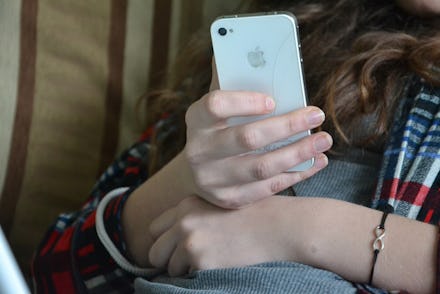In the future, cracked phone screens may be able to heal themselves

Someday, shattering a brand-new, shimmering iPhone on the pavement may no longer be a big deal.
A group of Japanese researchers at the University of Tokyo have successfully developed a kind of self-healing glass that bonds cracks back together after surfaces have been shattered. Though the material hasn’t been used in a smartphone yet, its accidental discovery could conceivably change future designs.
During an unrelated experiment, one of the University of Tokyo researchers reportedly noticed that polymer intended for use as glue was able to fuse back together after being cut.
All it took was about 30 seconds of compression at room temperature, which is an unusual feat: Not only is it faster than other self-healing screen materials that have been developed, it doesn’t require high heat to repair cracks.
The material could potentially revolutionize electronic design or perhaps pave the way for research on self-healing bones and tissue. It could also help reduce electronic waste around the world.
“I hope the repairable glass becomes a new environment-friendly material that avoids the need to be thrown away if broken,” Yu Yanagisawa, a graduate student in the university’s department of chemistry and biotechnology, told Japanese national broadcaster NHK.
It’s exciting, but there’s still no telling when the material could be incorporated into commercial electronics. For now, the majority of us will have to invest in high-quality phone cases — or continue to text on splintered screens.